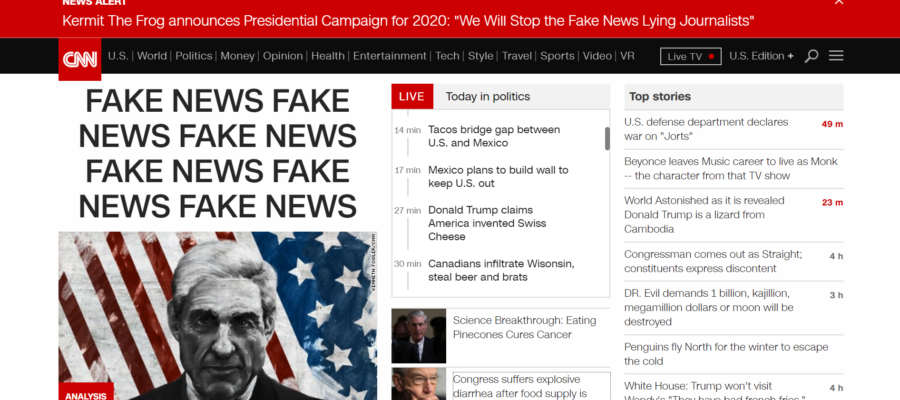The ways for people to pinpoint what is real fact has become increasingly difficult as a free press and massive market of ideas has been made immediately and readily available to nearly all of the western world in the age of New Media.
“Fake News” has always existed in human history with people misrepresenting or just lying to other for some ulterior motive. However, today the lines between what is credible and what is not are becoming increasingly blurred.
The collection of content churned out by bloggers and citizen journalists in the 21st century is mixing and distorting the content-feed for the public that had previously been informed by more well-established, reputable news sites throughout the 20th century.
HERE ARE THE RULES FOR TELLING WHAT IS REAL NEWS AND WHAT IS FAKE NEWS
RULE 1: DON’T JUST READ THE HEADLINE
Headlines in the New Media age are meant to be attention grabbing, preying on human curiosity, and up to interpretation. Everyone knows the phrase “If it sounds to good to be true, it probably isn’t.” Well, if it sounds too crazy to be true, it probably isn’t.
Those crazy “news” posts you see on facebook and twitter that are circulated heavily are typically being shared because the headline is provoking. Simply being aware that there could be more to the story than what the headline might suggest is a major part in the battle for each individual to spot fake, exaggerated, or misrepresentative stories.
Here’s a test!
Below are four news stories. Some of these news stories are actual news stories on the Fox News website, and two are altered headlines that I made up. See if you can try and tell which ones are real, and which ones are fake.

How do you think you did? There are two real ones, and two fakes ones, but all are equally “crazy” news stories that are meant to provoke and capture an audience based on their discontent stemming from their political ideology.

One can argue that even the “real stories” above are not even close to representative of those issues, and are entirely speculative. There is no hard evidence to back up the claims that either of those articles could make.
RULE 2: CONSIDER HOW CREDIBLE THE WEBSITE IS
Because so much of our news comes from an online source, the collection of content from unreputable sources can overwhelm the more established sources that follow a journalistic code of ethics.
Good News Sources
Well established newspapers like the The New York Times, The Wall Street Journal, and The Daily Telegraph are more strict with their adherence to journalistic standards. Additionally, organizational or governmental websites like NASA.gov or Weather.gov can provide credible and direct information.
Sensational News Sources
Websites like Buzzfeed, Huffington Post, and Breitbart are significantly less credibly news sources, though generally accepted as common-place news sources in the 21st century.
These news sources are incredibly sensational to the point that they can manipulate audiences into not thinking for themselves and encouraging these audiences to come to a hegemonic consensus. These are not a good source for “hard news,” but they are fine sources for opinion pieces that will not challenge the intellect of readers.
These are excellent choices for “entertainment-ized” news and politics, but can often create an echo chamber with their regular audiences. These sites either do not adhere to telling straight facts or lie to their regular audience through omission of certain news stories.
RULE 3: WHAT IS THE SOURCE OF THE STORY
*This is the most important rule to follow in spotting fake news*
Understanding the credibility of a news sources’ source is what can help you determine as a reader if a story is true or not. Unlike the other two rules, this will require a bit of work on the reader’s part.

You must be logged in to post a comment.